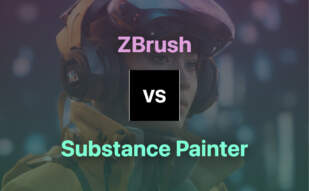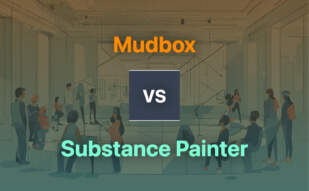Mudbox is a digital sculpting software created by Skymatter, known for its powerful sculpting tools and compatibility with Autodesk software. It allows for the addition of intricate details to 3D models and features a non-destructive workflow. Subscription-based with a student license incentive.
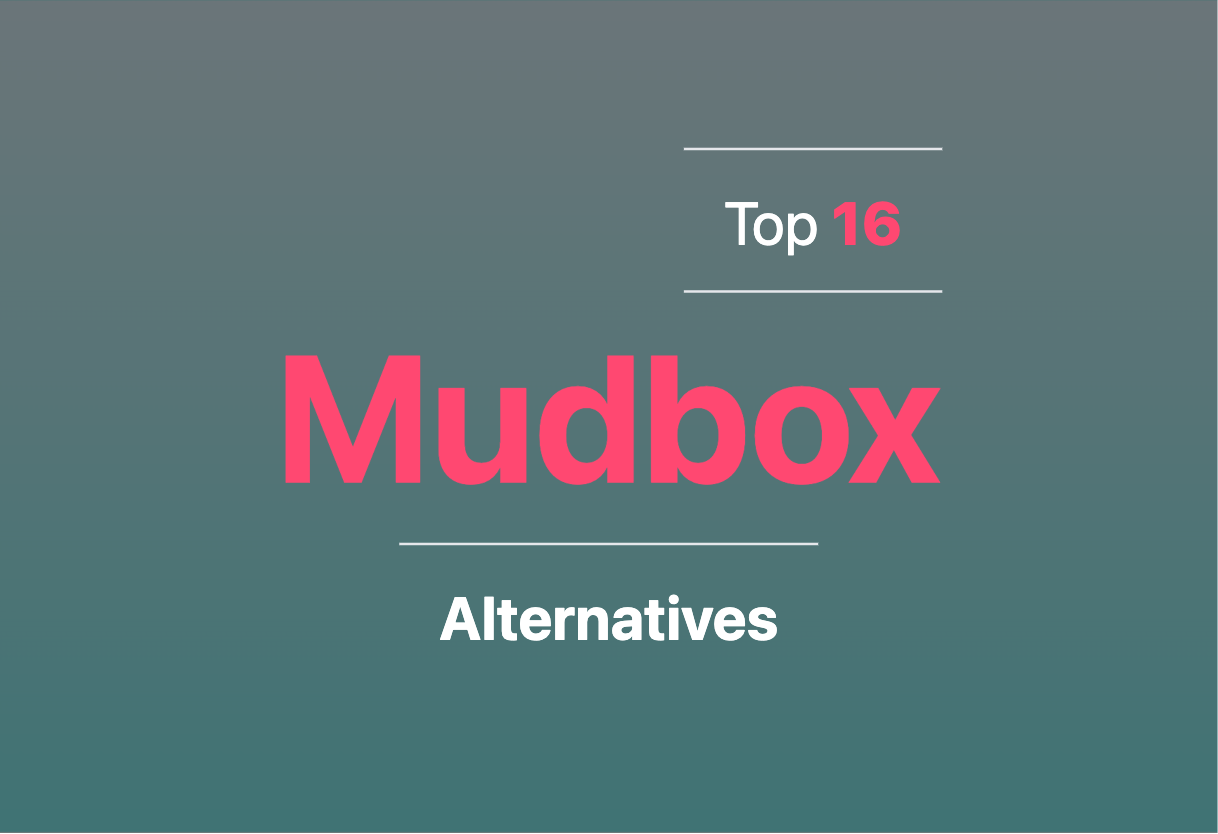
Considering alternatives to Mudbox, you may explore ZBrush, 3DCoat, Blender, Maya, 3ds Max, Modo, Substance Painter, Substance Designer, Sculptris, TopoGun, Meshmixer, Unreal Engine, Unity, Mari, SketchUp, Fusion 360.
ZBrush
Immerse yourself in the realm of ZBrush, a trailblazing digital sculpting software hailed by gaming, film, and animation industry veterans.
ZBrush Top Features
- Sculptris Pro: An innovative digital clay, enabling dynamic tessellation, and perfect for unrestricted creativity.
- Dynamesh: A fast, dynamic digital sculpting method that facilitates flexibility and creativity.
- ZRemesher: An automatic retopology tool, ideal for creating suitable base mesh for sculpting characters and creatures.
- PolyPaint: Allows painting directly onto a model’s surface without first designating a texture map, adding to seamless creativity.
- PolyGroupIt: This ace feature effortlessly groups the topology of your model, simplifying manipulation.
- Gizmo 3D: Provides extraordinary control during 3D transformations- Move, Scale, Rotate.
| Learn with ZBrush | Dive into a plethora of online courses available on platforms like Udemy, Skillshare, Cineversity, tailored to suit different learning styles and expertise levels. |
| Community Support | Join the r/ZBrush community, an interactive platform where artists converge to learn, share, and exhibit their ZBrush workings. |
| Work with Complementary Tools | ZBrush can be effectively teamed with tools like Photoshop for enhanced results. |
ZBrush Disadvantages
- High learning curve: Despite comprehensive online tutorials and courses, mastering ZBrush can be formidable for beginners.
- System requirements: ZBrush demands significant system resources, potentially limiting its performance on lower-end hardware.
ZBrush Use Cases
Game Development
ZBrush has asserted its dominance in game development, delivering finely-detailed, ultra-realistic animal characters and dinosaur figures.
High-Poly Character Development
When it comes to sculpting high-polygon characters, ZBrush remarkably stands out, offering advanced techniques for hard surface sculpting, character modeling, and anatomical sculpting.
Film and Animation
ZBrush is the secret recipe of many film and animation pros for creating ultra-impactful, intriguing characters and elements.
3DCoat
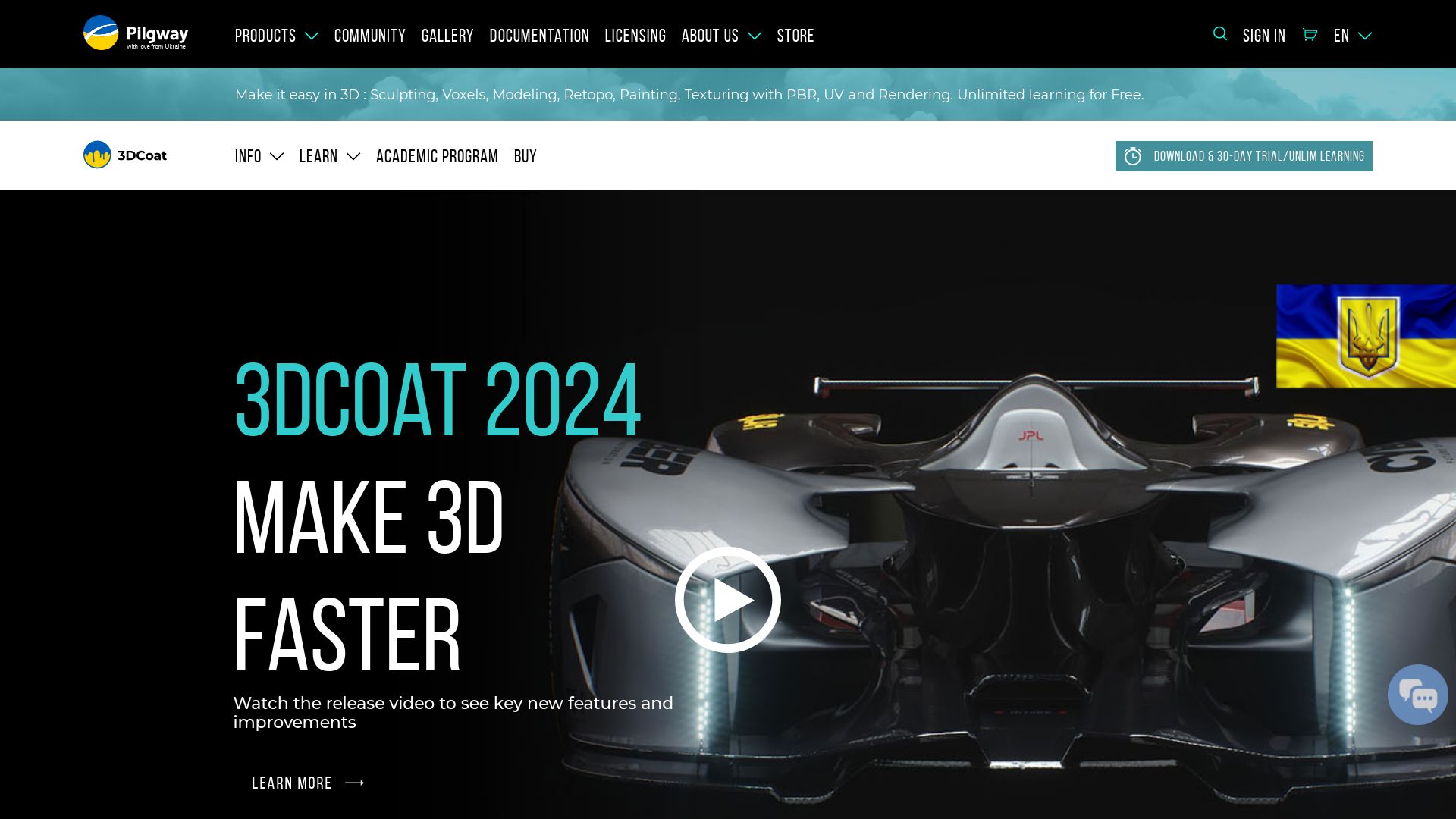
Born out of the culturally rich cityscape of Kyiv, Ukraine, 3DCoat, developed by Pilgway, resonates with the ever-changing wave of digitization and serves as a testament to proactive tech development across borders.
3DCoat Top Features
- Regular Updates: Sustained development efforts with constant new features and updates.
- Compatibility: Seamless integration with Lightwave 2018/19/20 for texturing import/export. For 3DCoat 2022, requires LW 2015 object file.
- Integrated Solutions: Offers sculpting tools, UVs, integrated renderer solution for a comprehensive design pipeline.
| Online Connectivity: | Necessary for validation with 3DCoat’s FServer servers and for certain licensing updates. |
| Learning Resource: | Used for learning at 200+ universities globally, spreading digital knowledge in multicultural classrooms. |
| 4K Support: | The latest version runs smoothly on 4K monitors, offering high-definition design capabilities. |
3DCoat Limitations
- Limited offline usability; details uncertain.
- Possible license issues due to simultaneous use on different systems.
3DCoat Pricing
The 3DCoat licensing range is diverse. It starts at $49 for 3DCprinting licenses and stretches up to $468 for Floating licenses. They offer one-time purchases and a variety of other options like monthly, quarterly, and one-year rentals.
3DCoat Use Cases
Use case 1: AR/VR Tech Focus
3DCoat stands as a reliable solution for those immersed in Augmented Reality and Virtual Reality development, offering the unique tools necessary for crafting immersive digital experiences.
Use case 2: Global Classrooms
Recognized in over 200 universities worldwide, 3DCoat, has become a beacon for technology learning, fostering digital diversity across global classrooms.
Use case 3: High Definition Design
With its latest version supporting 4K monitors, 3DCoat caters to designers prioritizing high definition detail who seek a precision-focused design solution.
Meshmixer
A prominent product of Autodesk, Meshmixer is a powerful tool for 3D designing and printing. It is free to use and offers a broad array of functionalities to help users create intricate 3D mashups and remixes.
Meshmixer Top Features
- 3D Sculpting Tools: Refine your design to a great level of detail with these tools.
- Remeshing and Mesh Smoothing: Optimize your 3D models effortlessly.
- Model Analysis: Ensure printability by troubleshooting design issues using the Inspector tool, Stability and Thickness analysis.
- Customizable Supports: Create uniquely modified supports based on your specific requirements.
- Export Capabilities: Export your models to multiple file formats such as stl, obj, collada, wrl.
- Direct Print Option: Send your design directly to a connected 3D printer or through online 3D printing service Sculpteo.
| Additional Features | Description |
|---|---|
| Make Solid, Hollow, Separate Shells, Resize, Measure | Features that allow for comprehensive editing and sizing adjustments. |
| Hollowing Out Models | Allows for hollowing out of models and adding escape holes for SLA printing. |
| Mesh-editing Tool | Enables the creation of physical representations of ideas in a cost-effective and time-saving manner. |
Meshmixer Limitations
- Missing some advanced functionalities compared to other professional 3D modeling software.
- Learning curve for beginners without a background in 3D modeling can be steep.
- Online support and community are not as robust as for some other alternatives.
Meshmixer Pricing
Meshmixer is free modeling software, demonstrating Autodesk’s commitment to making 3D design accessible to all.
Meshmixer Use Cases
Use case 1: Artists and Hobbyists
With its user-friendly interface, mesh-editing tools, and detailed sculpting options, Meshmixer is an ideal choice for artists and hobbyists looking to bring their concepts to life.
Use case 2: Startups
For startups working on a tight budget, Meshmixer’s zero-cost and versatile features make it a valuable tool for creating, editing, and ensuring the printability of 3D models.
Use case 3: Educational Institutions
Educational institutions implementing 3D modeling into their curriculum will find Meshmixer’s free and comprehensive feature set ideal for teaching students the basics of 3D design and printing.
Unreal Engine
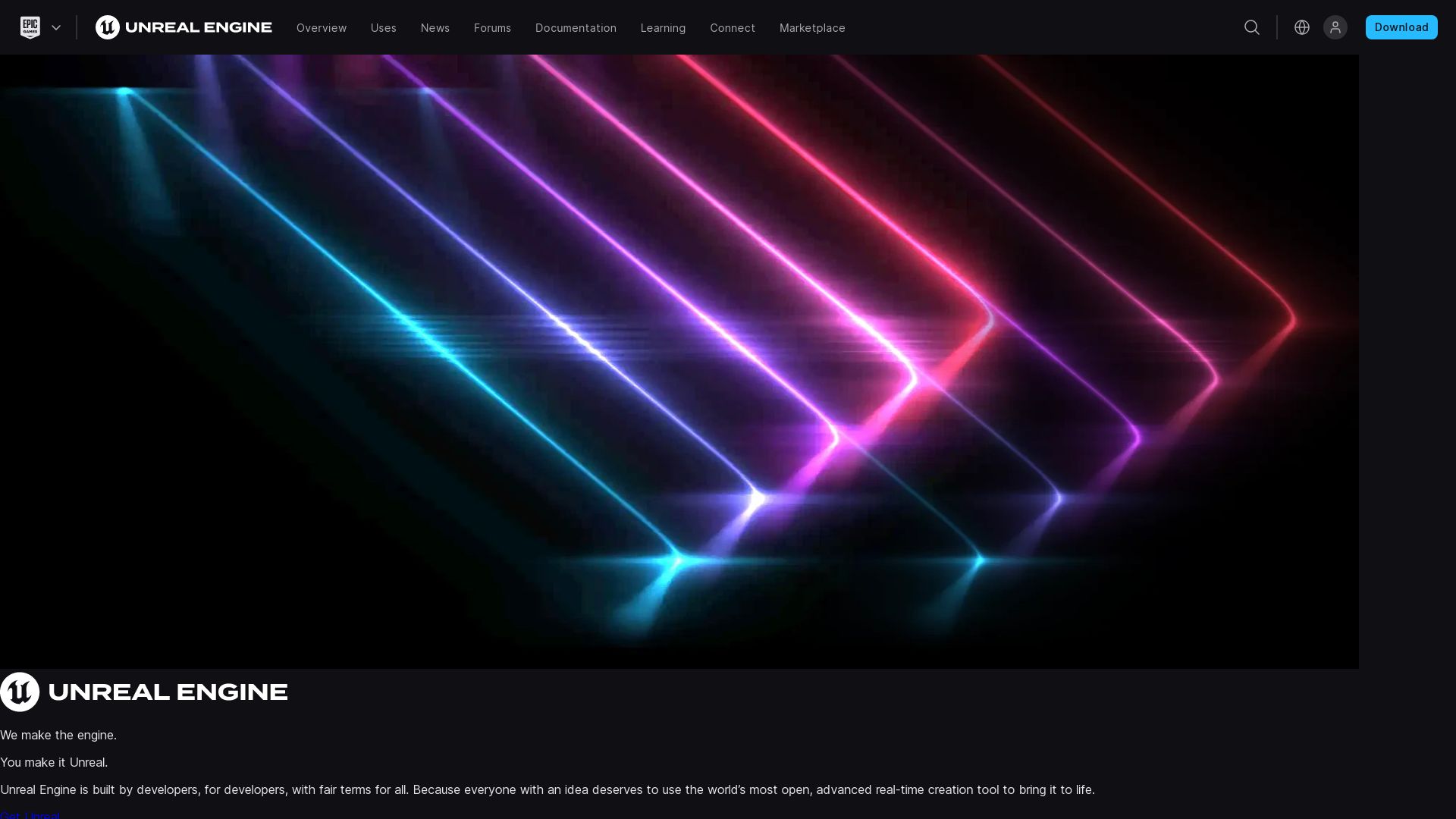
Brought to life by the skilled developers at Epic Games, Unreal Engine is a powerful 3D graphics engine that has been shaping the visual design of various industries, including gaming, film, and television, since its very first showcase in 1998 with the game Unreal.
Unreal Engine Top Features
- Comprehensive Platform Support: Written in C++, it seamlessly supports multiple platforms, including desktop, mobile, console, and virtual reality.
- Robust Level Editor: Boasts a functional level editor, UnrealEd, which is equipped to handle real-time constructive solid geometry operations efficiently.
- Unreal Development Kit: Introduced a freely available version of UE3’s SDK in November 2009 which supports creation of iOS games and applications.
- Developer Friendly Marketplace: Unreal Engine Marketplace not only allows developers to trade their creations but also rewards them with a handsome 88% share of the revenue generated.
- Free for Educational Institutions: Schools and Universities can gain unlimited access to Unreal Engine without any associated costs. This encourages learning and fostere the development of future designers and creators.
| Feature | Description |
|---|---|
| Project Templates | Offers basic project templates which act as ideal starting points for a first-person or third-person experience. |
| Integration of Acquired Technologies | Efficiently implements features from acquired companies like Quixel to add more dimensions to the platform. |
| Worldwide popularity | Strategically aligns with partners to popularize the usage of its software worldwide. |
Unreal Engine Limitations
- While UE is quite open for modders, the use of the programming language C++ might introduce a level of complexity for creators not familiar with it.
- A royalty of 5% charged for revenues generated over USD 1 million for commercial use.
- Royalty model is waived only for games published on the Epic Games Store.
Unreal Engine Pricing
Unreal Engine follows a royalty model where Epic Games charge 5% of the revenues for commercial use, once the revenue crosses the $1 million mark.
Unreal Engine Use Cases
Use case 1 – Game Development
Given its extensive support for various platforms and its robust level editor, Unreal Engine serves as an excellent tool for game developers across genres.
Use case 2 – Film and Television
Film and television industries can leverage Unreal Engine for creating visually stunning and realistic effects.
Use case 3 – Educational Institutions
Educational institutes can utilize the engine in their curriculum to train students in game development or film and television graphics, as it is provided for free for such entities.
Unity

A 3D and 2D game development powerhouse, Unity took its flight in 2005. Lauded for its robust suite of tools, cross-platform compatibility, and vibrant asset store, the platform has been an accomplice to many an immersive gaming experience and stunning AR simulations.
Unity Top Features
- Multi-platform game creation: Whether you fancy Android, iOS, or several other operating systems, Unity enables seamless development.
- Diverse tools and rendering technology: Unity offers a palette of tools that supports the creation of high-quality games.
- Dynamic asset store: With countless pre-designed textures and features, the platform facilitates creative brainstorming and game designs.
- Multiple coding languages: Unity empowers its users through BOO script, JavaScript, and C#, encouraging diverse coding styles.
- Active developer community: A ready ecosystem for assistance, problem-solving, and feedback, Unity thrives on its enthusiastic developer community.
| Features | Benefits |
|---|---|
| AR and VR game creation | Unity promotes the advent of AR/VR in gaming, fostering intricate, immersive experiences. |
| Continuous technology evolution | Striving for user-friendliness and visual splendour, Unity continuously revamps its tech prowess. |
| Open communication for problem-solving | Unity invests in constant learning and dialogue with users to solve problems and discover new industry solutions. |
Unity Limitations
- Pricing shifts: Unannounced pricing changes and newly implemented per-install fees have contributed to trust issues between Unity and its devoted user base.
- Revenue-based charges: Unity’s new fee model imposes charges on games that surpass 200,000 installations and $200,000 in revenue, potentially hurting indie developers.
- No Unity Plus tier: The recent removal of the Unity Plus subscription tier lessens options for developers seeking additional features.
Unity Pricing
Unity’s new pricing model, taking effect on January 1, 2024, gathers controversy, as it involves a fee for each game installed using Unity software. The platform does offer free and Pro versions, though developers must navigate potential install fees and retroactive charges. To protect against excessive fees, Unity has pledged to readjust fraudulent installs, and has a flat limit — no install fees are charged until a game surpasses 200,000 installations and $200,000 in revenue.
Unity Use Cases
Use case 1 – Indie Game Development
With robust tools, diverse coding languages, and a fertile asset store, Unity provides a rich, customizable environment for indie game developers, despite pricing concerns.
Use case 2 – AR/VR Development
Unity is a trailblazer in facilitating the creation of AR/VR features in games, offering a seamless experience for developers venturing in this domain.
Use case 3 – Cross-Platform Game Development
As a initiator of multi-platform compatibility, Unity allows developers to create engaging games that work seamlessly across Android, iOS, and several other operating systems.
Mari
Developed by Foundry, Mari is a powerful 3D texture painting solution, designed for handling complex projects. From movie industries to gaming sectors, it’s leveraged worldwide.
Mari Top Features
- High-Resolution Assets: Known for supporting UDIM workflows, Mari can manage countless high-resolution texture maps.
- 3D Paint Tools: These artist-friendly tools empower creators to design without constraints, encouraging innovative ideation.
- Projection-Based Painting: The system allows adjustments and previews in a 2D context before final commitment, providing an accurate assessment of the projected design.
- Non-destructive Layer & Node Graph Systems: Facilitates uncomplicated design creation, offering flexibility and speed.
- Python API and Full OCIO Color Management Support: Facilitates workflow automation and color management.
| Feature | Benefit |
|---|---|
| Materials System | Allows speedy creation of high-volume assets with less complexity. |
| High Polygon Handling | No slowdown when handling over a million polygons in a single topology. |
| Industry-Standard Compatibility | Mari works with widely-used formats such as FBX, OBJ, Alembic, and OpenEXR. |
Mari Limitations
- Relies on Nvidia GPUs, requiring 1GB RAM and OpenGL 3.0 support for optimal performance.
- License costs can be expensive, particularly for smaller entities or individual users.
Mari Pricing
Annual license for Mari costs $1,119, while the quarterly rental license is priced at $829. There’s also an annual/monthly subscription available at $689/$86 respectively.
Mari Use Cases
Use Case 1: Gaming Industry
Mari’s ease in managing massive 3D datasets makes it a recurring choice for game development, offering real-time preview, path tracing, and shading abilities.
Use Case 2: Movie Industry
Utilized in creating complex and intricate textures for films, Mari’s efficient handling of high-resolution texture maps offers unparalleled detail and precision.
Use Case 3: Design and Architecture
Ability to quickly create less complex, higher-volume assets combined with its compatibility with industry-standard formats makes Mari a choice for architects and designers.
SketchUp
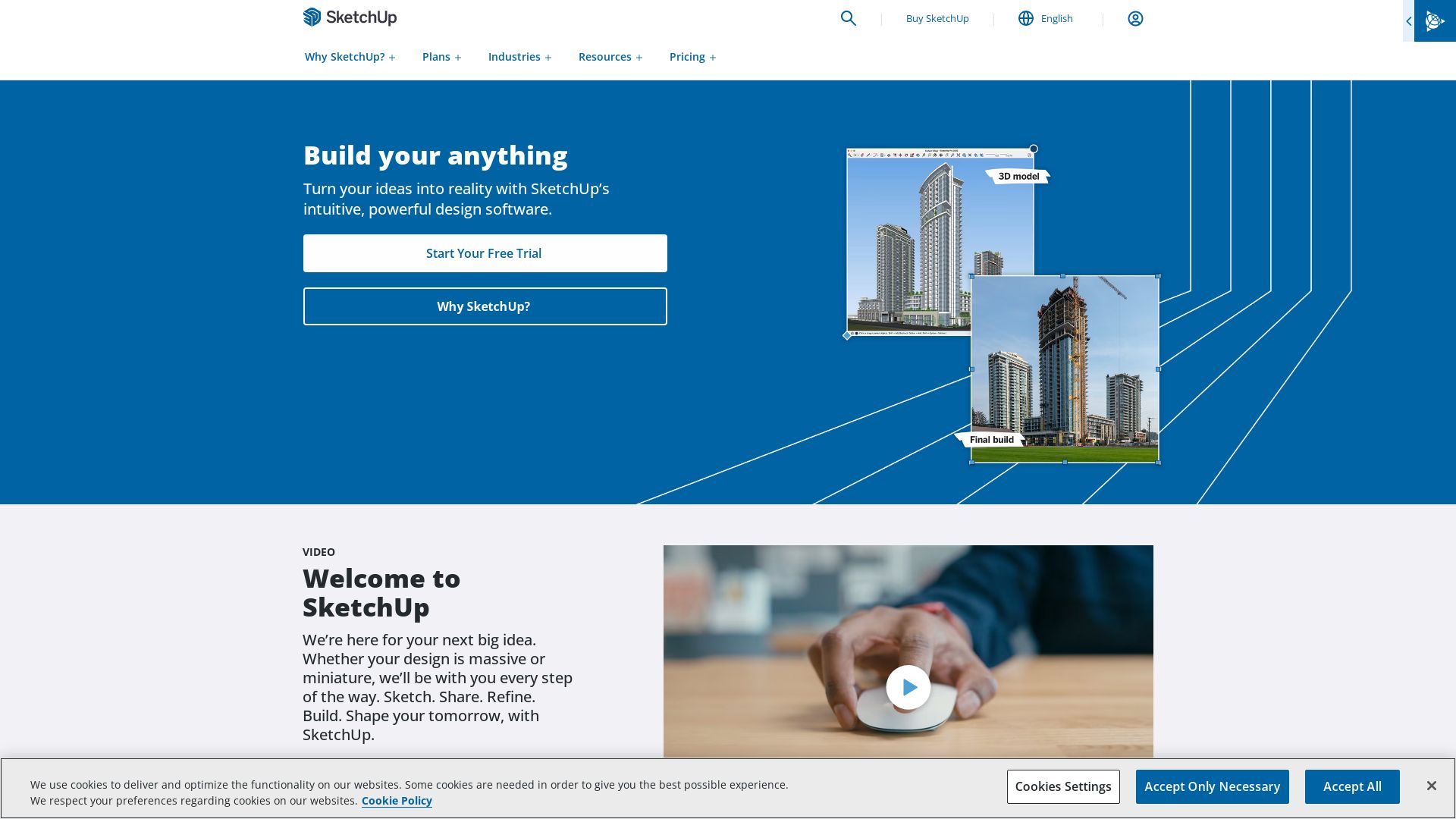
Developed by Trimble Inc, SketchUp is a loaded 3D modeling computer-aided design (CAD) program used across a wide range of applications – from architecture to video game development. Originally launched by startup @Last Software in 2000, it was acquired by Google in 2006, and later by Trimble Inc. in 2012. It is known for its intuitive interface, making it equally user-friendly for beginners and pros.
SketchUp Top Features
- Smart Drawing Tools: Facilitate architectural design to interior modeling and product visualization.
- 3D Warehouse: A comprehensive platform allowing users to upload, download, and share 3D models.
- Real-time Collaboration: Enhances team operations and workflows.
- Rendering Options: Offers impressive, cutting-edge rendering choices.
| Plugins and Extensions | Expand the CAD software’s capabilities. |
| V-Ray Compatibility | Enables creation of photorealistic renders. |
| ‘Push/Pull’ Technology | Pioneering technology patented by SketchUp. |
SketchUp Limitations
- While SketchUp comes with a gamut of extensions and third-party additions, these are not supported in the SketchUp Free, web-based version.
- As of November 4, 2020, the switch to a subscription-based model may not appeal to all users.
SketchUp Use Cases
Use case 1: Architecture and Interior Design
With its precision, accuracy and comprehensive 3D Warehouse, SketchUp is especially suited to the spheres of architecture and interior design, facilitating fluid drafting and visualization.
Use case 2: Film and Video Game Development
Courtesy of its versatile modeling and rendering options, SketchUp is frequently employed in film and video game development, allowing for innovative design execution.
Use case 3: Industrial and Product Design
SketchUp’s smart drawing tools and Rhino 3D’s advanced features collectively make the software a practical choice for industrial and product design, providing a high level of detail and precision.
Fusion 360
An integrated software for design, engineering, electronics, and manufacturing, Fusion 360 is a cloud-based collaboration platform developed by Autodesk. Serving various operating systems including Windows, macOS, Android, iOS, and web browsers, it has been a popular choice among designers since its first release on September 24, 2013.
Fusion 360 Top Features
- Integration of CAD, CAM, CAE, and PCB design.
- Advanced 2D and 3D designing capabilities.
- Powerful simulation capabilities and topology shape optimisation.
- Realistic rendering and cooling of electronics.
| Additional Features | Description |
|---|---|
| Cloud-based Collaboration | Streamline your workflow with the help of cloud integration. |
| Fusion 360 Online Learning Resources | A large online community and abundant resources come forth to aid your learning process. |
| Regular Feature Updates | Never lag behind, thanks to regular feature updates by Autodesk. |
Fusion 360 Downsides
- Possible malware risks.
- Lacking personal keyboard controls.
- No web-based standalone version available.
Fusion 360 Pricing
Fusion 360 is made available free (in a limited version) for home use, while professionals can access its different features for an annual subscription of $545/year or at $70 per month.
Fusion 360 Use Cases
Electronics
Fusion 360 shines in the field of electronic design, integrating electronic features for MCAD and ECAD co-designing.
Aesthetic Design
With advanced 2D & 3D designing, Fusion 360 is deft at solving the complexities of aesthetic design.
Architecture
It brings architectural visions to life, offering realistic rendering and impressive simulation capabilities.
Blender
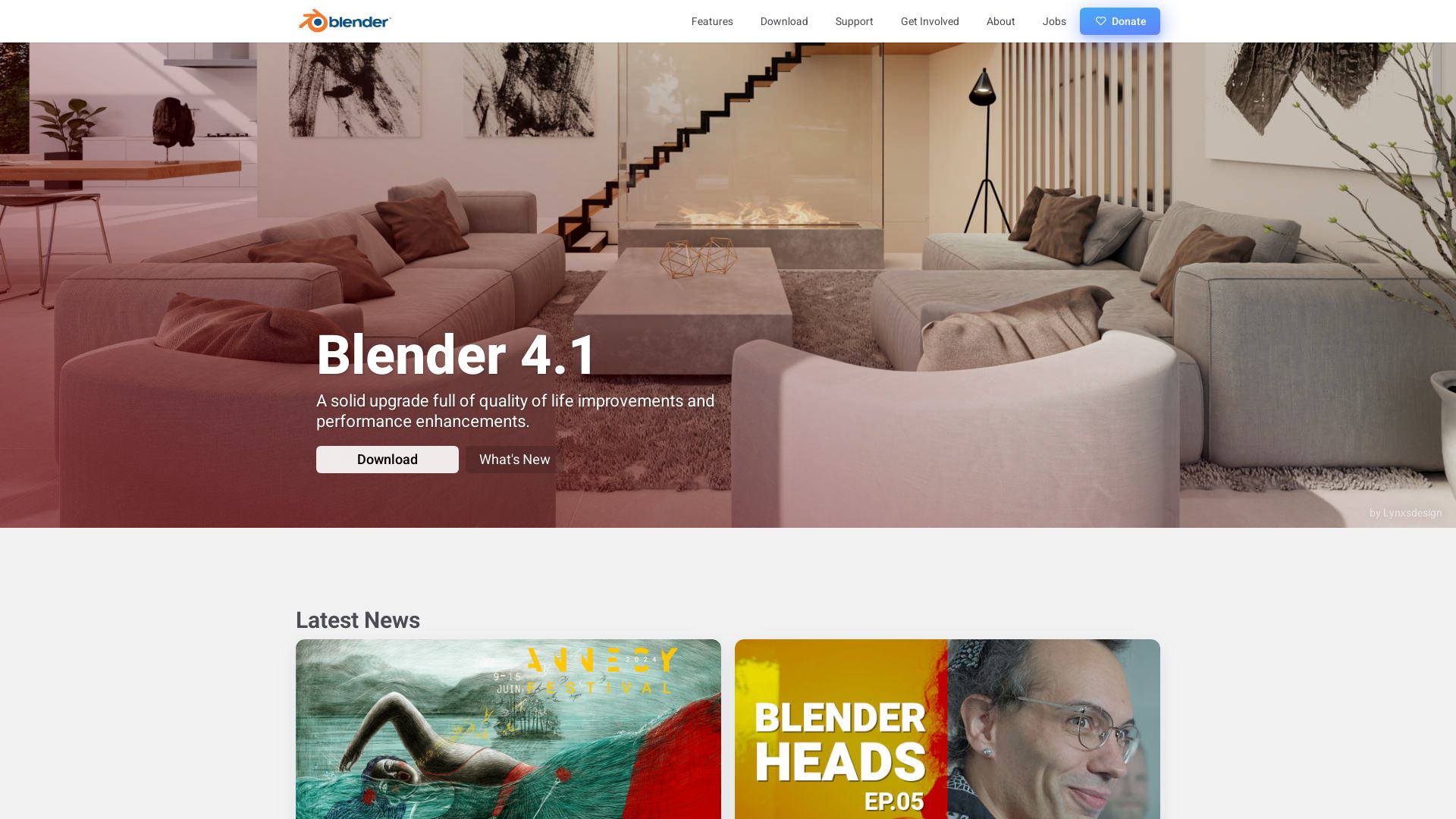
Kick the conventional to the curb and meet Blender, a free, open-source beast in the world of 3D computer graphics software tools. Born in 1994, it’s no fledgling and boasts impressive credentials: penned in Python, C, and C++, it has played a defining role in animated films, VR, and more.
Blender Top Features
- 3D Modelling: Wield the power to shape and mold digital matter with precision.
- Texturing and UV Mapping: Birth realism in the 3D world, giving your models skin they could almost breathe.
- Animation: Create magical motion, defy gravity and time inside the sphere of Blender.
- Video editing and compositing: From cutting to correction to splicing, it’s a one-stop shop for any video need.
- Fluid, soft body, particle simulations: Create stunning effects that flow, burst, and move with a life of their own.
| Graphics | Description |
|---|---|
| Digital Drawing | Keep it simple with sketches or go Picasso with Blender’s digital drawing tools. |
| Raster Graphics Editing | Edit pixel-level details to your heart’s content. |
| Sculpting | Fuse art and technology to sculpt digital masterpieces. |
Blender Limitations
- The vast toolbox can seem overwhelming for beginners.
- Blender’s Game Engine has been discontinued as of 2.8 release.
- The legacy Blender Internal removed since 2.80 release in favor of the Eevee renderer.
Blender Pricing
Redefine your definition of ‘free’. With Blender, expect zero cost, zero pesky ads, but full features and full freedom. Why? Because it’s open-source.
Blender Use Cases
Use case 1: Animated Films
With its comprehensive animation tools, Blender has been a silent hero in many blockbuster animated movies.
Use case 2: Visual Effects
Smoke or explosions, Blender’s simulation prowess adds the WOW to visual effects on the big screen.
Use case 3: 3D-Printed Models
Blueprints for a 3D-printed future are drawn with Blender. It is trusted by designers to conceptualize, experiment, and create.
Maya
Steeped in a rich history and astoundingly versatile, Autodesk Maya, known simply as Maya, is a highly customizable 3D computer graphics application. Origins trace back to pioneering tech companies Alias and Silicon Graphics Inc, Maya has advanced interfaces tailored for the dynamic world of animation. It’s extensively used across multiple domains, boasting a vibrant user community with organizations like Accenture, Dell, and EYGBS India.
Maya Top Features
- NURBS modeling system adept at creating intricate shapes.
- Powerful animation capability includes movement, deformations, and effects.
- Embedded scripting language Maya Embedded Language (MEL) tailored to this environment.
- Compact with functionalities such as 2D drawing, 3D modeling, and animation simulation.
- Integrated renderer, mental ray, renowned for its advanced features.
- Supports detailed texturing, shading, lighting, and an advanced rigging system.
| Import/Export Data Options | Variable License Pricing |
| Maya allows for seamless data import/export, winning it a place in many design workflows. | Maya provides license costs tailored to different business scales, including a low-cost option for businesses earning below $100,000. |
| Comprehensive Support | Inter-operability with Game Engines |
| Wide usage guarantees robust support and a vibrant community for users to turn to. | Maya scores high on flexibility with easy asset import into game engines like Unreal Engine and Unity. |
Maya Limitations
- Learning curve: Quite complex, new users may need time and training.
- Cost: Maya’s robustness comes at a price; it may be seen as pricey for smaller businesses or independent freelancers.
Maya Pricing
Maya extends various pricing plans, including monthly and yearly subscriptions. Businesses earning less than $100,000 can avail of a lower fee. It also offers a free trial and an educational license.
Maya Use Cases
Use Case 1: Animated Films and TV Series
Maya’s powerful animation capabilities and highly detailed modeling system has scored roles in iconic projects such as The Lord of the Rings series and Star Wars series.
Use Case 2: Visual Effects
The ability to apply advanced effects, including subsurface scattering and global illumination, coupled with its won Academy Award for Technical Achievement in 2003, asserts Maya’s prominence in creating top-notch visuals effects.
Use Case 3: Interactive 3D Applications
Maya’s capacity in creating realistic, interactive 3D animations and models makes it the darling of application developers and game studios worldwide.
3ds Max
Developed by Autodesk Media & Entertainment, 3ds Max, formerly known as 3D Studio, is a versatile software used broadly in the creation of 3D animations, models, games, and images.
3ds Max Top Features
- Modeling Capabilities: Offers creative texture, planar mapping, and polygon modeling, commonly used, especially in game design.
- Flexible Plugin Architecture: Options for additional specialized plugins, available for purchase separately.
- Built-in Scripting Language: MAXScript adds to its robust functionality, making it virtually customizable to meet specific project needs.
- Animation Tools: Includes expressions, scripts, list controllers, wiring, and two different modes for keyframing.
| Feature | Benefit |
|---|---|
| Scene Explorer: | Provides a hierarchical view of scene data, enhancing the user’s ability to manage resources. |
| Cloth Simulation: | An integrated cloth solver for realistic cloth simulations, crucial for character animations. |
| Integration with Autodesk Vault: | Consolidates asset management for efficient, organized workflow. |
3ds Max Limitations
- Can only be used on Windows platform
- Highest compatibility is with recent Windows versions (Windows 10 & 11), implying potential compromises on older versions
3ds Max Pricing
Uses a token system for pricing, allowing users to pay-as-they-go. Specialized plugins are available, but these are separately purchased.
3ds Max Use Cases
Use Case 1: Video Game Development
The robust suite of animation tools, scalability via plugins, and polygon modeling make 3ds Max a strong choice for video game developers.
Use Case 2: Architectural Renderings
3ds Max’s ability to produce high quality, pre-rendered productions coupled with integration with Autodesk Vault make it ideal in the creation of architectural presentations.
Use Case 3: Education
With its wide use in industry, 3ds Max is also often featured in educational programs across secondary and tertiary level institutes, preparing students for real world applications.
Modo
Representing the epitome of modern 3D modeling, animation, texturing, and rendering, Modo is an advanced creation tool birthed by the engineers who previously developed LightWave 3D. Hailing from Luxology LLC, Modo has since amalgamated with Foundry to offer a multitude of advanced features.
Modo Top Features
- Provides assets for advanced n-gons and edge weighting.
- Incorporates an intelligent Intel Denoiser, enabling crisper rendering and enhanced shading.
- Facilitates workflow customization through features like Ruler/Grid MeshOp and native 3dm Rhino 7 support.
- Features the responsive Wrap Effector, aiding chaotic deformations and enabling efficient animation exporting for game engines.
- Supports a wide array of platforms including OCIO, USD, FBX, Qt5, and Python 3.
| Feature | Description |
|---|---|
| Planar Decals, Seam Decals, Triplanar Texturing | Enables artists to achieve a high level of personalisation in their rendering jobs. |
| Advanced Boolean operations with MeshFusion | Allows precision and control during the modeling process, resulting in complex geometric forms. |
| MODO’s setup feature | Accommodates rig adjustment while preserving animations. |
Modo Limitations
- Interface may be overwhelming for beginners due to the array of functions and features.
- Certain features like the Wrap Effector and advanced sculpting tools may require advanced level understanding for their optimal use.
Modo Pricing
Modo comes with an upgrade-based pricing model, with free trials available for initial 30 days. Interested users can look forward to subscription-based plans that can be customized per individual needs.
Modo Use Cases
Use case 1 – Footwear Design
Trusted by global brands like New Balance, Modo has rapidly evolved as the go-to 3D modeling platform for the footwear design industry. It’s essential asset creation and quick render previews allow for high level of detail and rapid iteration.
Use case 2 – Mobile Gaming
The mobile gaming industry, including companies like Wooga, have consistently used Modo for efficient animation exporting, precise mesh editing, and highly detailed asset creation.
Use case 3 – Industrial Visualization
Concept artists and industrial visualizers find the advanced sculpting and modeling tools of Modo indispensable. Its core features like the topology pen and geometry constraints help create highly-detailed designs with ease.
Substance Painter
Stepping into the realm of 3D digital painting, Substance Painter by Allegorithmic makes its stamp as a power player. It’s likened closely to Adobe Photoshop. It’s a staple in the gaming industry, utilized by giants such as Capcom and Activision. Substance Painter is engineered primarily for texturing models and painting textures.
Substance Painter Top Features
- Advanced masking.
- Procedural texturing tools.
- Real-time PBR material workflows.
- 8k texture baking.
- Ability to paint on both 2D maps and 3D model in the 3D viewport.
- Exports all textures in PBR format compatible with game engines.
| High Profile usage | Substance Painter has been used in the development of high-profile games like Uncharted 4 and Horizon Zero Dawn. |
| Continued Development | Adobe recently acquired Allegorithmic, ensuring its continued development. |
| Interface Similarity | The interface is similar to other 3D software packages further easing its usability. |
Substance Painter Downsides
- Requires a polygonal model properly UV unwrapped for painting.
- Cost may be on the higher end for independent game developers.
Substance Painter Pricing
Substance Painter’s pricing is higher for individual game developers, placing it both above and below Mudbox. When compared to 3D-Coat and Mari, Substance Painter provides more value for money. There is also potential for Substance Painter to be bundled with Substance Designer at a combined cost of $700.
Substance Painter Use Cases
Use case 1 – Game Development
Substance Painter, being used by major gaming companies, proves its immense value in the game development sector. The ability to quickly generate realistic textures and meshes enhances overall game development timelines and quality.
Use case 2 – 3D Digital Art
Substance Painter thrives in the digital art space, particularly in three-dimensional art. Its compatibility with PBR formats makes it suitable for many digital art endeavors.
Use case 3 – Training and Research
With myriad training tutorials available, covering everything from software basics to texture painting, Substance Painter provides a comprehensive learning platform. It aids in research due to its easy-to-use interface and rich development possibilities.
Substance Designer
Presenting Substance Designer, a premier material-authoring software from the house of Adobe. Certain to impact 3D sculpting and design globally, this state-of-the-art platform is inevitably celebrated by 3D professionals and enthusiasts alike.
Substance Designer Top Features
- Spline and Path Tools: Added in version 13.0, these tools let you generate and manipulate 2D shapes.
- ‘Portal’ functionality to Dot Node: This novel feature adds to the ease of node graph organization.
- Substance Engine 9: Supports loops repetition within Substance Function Graphs, optimising texturing tasks.
- Pattern Creation: The platform allows for advanced surface pattern creation and control over pattern scattering.
- Home Screen Feature: Easy access to project settings and tutorials.
| Feature | Description |
|---|---|
| Language support | Available in multiple languages including French, Italian, and Portuguese editions |
| Integration with Unreal Engine | Allows 3rd-party plugins integration and compatibility with Unreal Engine |
| Discontinued procedural geometry toolset | No access to model graphs, due to the removal of the procedural geometry toolset |
Substance Designer Downsides
- Discontinued procedural geometry toolset affects users needing model graphs.
- Pricing may be a hurdle for some, as it varies depending on subscription or regional pricing.
- Requires a reasonable system specification to run efficiently, minimum requirements include a 64-bit processor and at least 8 GB RAM.
Substance Designer Pricing
Substance Designer is available through multiple pricing avenues. You can opt for a one-time license purchase priced at $149.99 via Steam or choose a subscription-based plan at $19.99/month or $219.88/year via Adobe’s Substance 3D subscriptions.
Substance Designer Use Cases
Use Case 1: AAA Game Developers
Substance Designer’s advanced material creation & texturing solutions make it a valuable asset for AAA Game developers. It has been instrumental in popular games like Deathloop and Assassin’s Creed Valhalla.
Use Case 2: Indie Developers
For Indie Developers, sophisticated but intuitive tools like Spline and Path allow robust control over 2D shapes. Alongside affordable pricing pathways, Substance Designer proves a wise choice.
Use Case 3: Visual Effects Studios
With its high degree of customizability, Substance Designer is a go-to software for Visual Effects Studios. Its compatibility with Unreal Engine ensures efficient workflow and stunning results.
Sculptris
Crafted by the atelier of Pixologic, Sculptris weaves a rich tapestry of artistic freedom and technical resilience, coalescing into an eloquent tool for 3D sculpting and design. A brainchild of ZBrush, Sculptris thrives in the sphere of digital editing, spawning a nuanced canvas for artists unrestrained by polygon resolution or technical limits.
Sculptris Top Features
- Unique brush behavior for sculpting and painting.
- Capacity for intricate detailing, or erasing it, without being bogged down by underlying topology.
- Compatibility with various models: DynaMesh, imported models, scan data, ZSphere adaptive skins, decimated models.
- Real-time application of decimation for optimized results.
- Uses Tessimation – a blend of tessellation and decimation.
| Feature | Function |
|---|---|
| Aim | Maintains brush shape accuracy during creation. |
| Technology | Utilizes automatic triangulation with brush strokes. |
Sculptris Limitations
- Non-Sculptris Pro ZBrush versions rely on model’s vertices for deformation.
- For vertex necessity before move, Sculptris Pro is a must.
Sculptris Use Cases
Use case 1: Gaming
Sculptris breathes life into the virtual world of gaming, embellishing it with detailed textures and realistic designs.
Use case 2: Animated Films
For rendering believable animated characters or environments, Sculptris has become go-to tool for many animators.
Use case 3: Commercial Advertisements
Sculptris can excel at rendering high-quality 3D assets for commercial productions where impressive visuals hold the viewer’s interest.
TopoGun

Sweep aside your 3D modeling woes and meet TopoGun – the standalone software that makes retopologizing and map baking a breeze!
TopoGun Top Features
- Million+ Polygon Handling: Wave goodbye to lag, TopoGun handles world scans and digital sculptures up to million+ polygons with ease.
- Enhanced Edgeflow: It aids in optimizing digital 3D models’ edgeflow for that seamless finish.
- One-Pass Baking & High-Res Texture Maps: Time efficient baking of multiple maps – retouching of high-res features and appearances never looked so good!
- Auto-Retopology: Automates the tedious parts, like modeling perfect ears, so you can focus on the details that truly matter.
- 32 & 64-bit versions: More memory access, more performance, more power!
| Feature | Benefit |
|---|---|
| Customizable Interface | Matches both Windows and macOS for user-friendly navigation. |
| Morpher Feature | Easily updates any changes in reference mesh on your retopologized model. |
| Subdivision Feature | Preserves intricate details of original mesh for further modification. |
TopoGun Limitations
- No integrated renderer: You might need to juggle software for creating and visualizing your creations.
- High RAM requirement: With power comes great processing requirement. Be mindful of your system specs.
TopoGun Use Cases
Use case 1: Asset Animation
If you are an animator looking for efficient tools to give life to your 3D assets, TopoGun’s powerful retopologizing features are worth a try.
Use case 2: Gaming
Are you a game designer scrambling for low-polygon assets that pack a punch? TopoGun’s powerful texture mapping and optimization can get you out of that sticky polygon mess.
Use case 3: 3D Sculpting
For 3D sculptors who thrive on detail, TopoGun’s high-res, efficient polygon management and texture mapping tools are your digital chisels.
Grant Sullivan
Content writer @ Aircada and self proclaimed board game strategist by day, AI developer by night.




